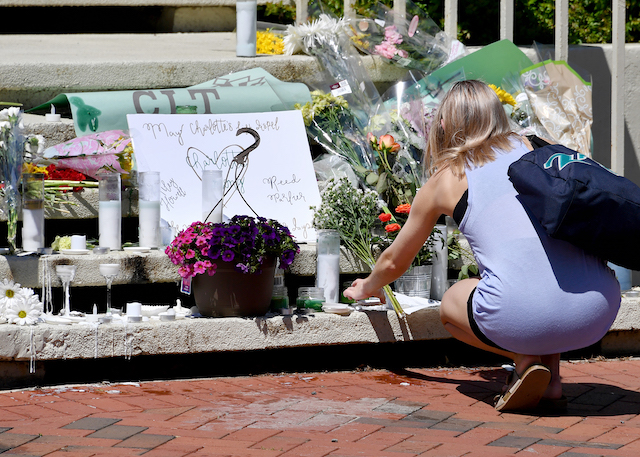UNC Releases Summary of Active-Shooter Review

The University of North Carolina at Charlotte has released a summary of an external review of its active-shooter response last year. An inside look at a crisis, including its communications aspects, always provides lessons.
You may recall the tragic event: A former UNC student entered a classroom in the main campus’s Kennedy Building on Tuesday, April 30, 2019, at about 5:39 p.m. He opened fire, killing two students and injuring four. The first campus police officers arrived within four minutes (the average for a school shooting is 10) and the shooter was arrested almost immediately.
The after-action review is confidential — “because of safety and security planning and preparedness,” according to UNC — but the school released a five-page précis. The International Association of Campus Law Enforcement Administrators and the National Police Foundation conducted the review.
The four main areas covered are leadership, relationships, and preparedness; crisis communication; threat assessment; and mental health, resilience, and recovery, according to a June 29 UNC press release on the report.
We are devastated to learn of the violence that occurred on the campus of UNC Charlotte, and our thoughts and prayers go out to the victims and their families. UNC System stands in solidarity with UNC Charlotte and ready with assistance for the students, faculty, staff affected.
— UNC System (@UNC_System) May 1, 2019
Both the press release and summary underline that UNC had no way of identifying the shooter as a threat prior to the incident. The report lauds the school for its fast law-enforcement response and compassionate communication.
“Campus leadership quickly responded to secure the campus (including by initiating a campus-wide lockdown), communicate with the campus community, and prepare for other ongoing campus needs,” the summary said.
An interesting observation about the lockdown: Although it was imposed quickly, there were no parameters for declaring the campus safe and ending the lockdown. Therefore, it went on too long — until around 10:45 p.m. as best as we can tell. One recommendation is to deal with that. It goes to show how much needs to be thought out in crisis planning.
Operations Center
Another recommendation from the review is to revisit the school’s Emergency Operations Plan and the configuration and location of its Emergency Operations Center. The reviewers suggest better training with outside agencies and boosting UNC’s ability to identify potential threats.
These recommendations arise from some apparent confusion during the crisis. “During the incident, some UNC Charlotte staff members did not fully understand or execute their expected roles and responsibilities in an active shooter situation, while others were overburdened by multiple roles,” according to the summary. “Clearly defining and assigning roles and responsibilities will enhance the effectiveness and efficiencies of important emergency response operations and processes.”
While the university’s communication during and after the incident was effective, opportunity exists for further clarifying communication roles and responsibilities in a crisis.
— From summary of after-action review
Again, UNC’s communications were lauded. The school put out a stream of messages to the community about what was happening and how students and others should respond (“At approximately 5:40 PM, shots were fired on the UNC Charlotte campus. Campus police and the Charlotte-Mecklenburg Police Department [CMPD] responded quickly to the scene and the campus was placed on lockdown. The suspected shooter is in custody”).
Chancellor Philip L. Dubois also released a statement that expressed shock and empathy (“This is the saddest day in UNC Charlotte’s history”) and provided information for students who needed counseling.
But as with operations, there was apparently confusion for those tasked with communicating. We say this a lot, but it bears repeating: The time to figure out what each team member’s job will be in a crisis is not after the crisis hits. This can get pretty granular (who’s responsible for inputting changes to the press release?).
“While the university’s communication during and after the incident was effective, opportunity exists for further clarifying communication roles and responsibilities in a crisis, and for developing backup plans for situations in which communicators are not immediately available,” according to the summary.
In crisis planning, there’s always room for improvement.
Photo Credit: UNC
Sign up for our weekly newsletter: http://eepurl.com/4cIWH
This is an abridged version of an article that appeared today on the CrisisResponsePro paid subscription portal. (CrisisResponsePro subscribers can access the full version by clicking here. ID and password are required.) To take advantage of all of the content, data, and collaborative resources CrisisResponsePro has to offer, contact us at info@crisisresponsepro.com.




 Back to Blog
Back to Blog